Newsletter
Subscribe to the e-mail-list
Subscribe to the e-mail-list
We may request cookies to be set on your device. We use cookies to let us know when you visit our websites, how you interact with us, to enrich your user experience, and to customize your relationship with our website.
Click on the different category headings to find out more. You can also change some of your preferences. Note that blocking some types of cookies may impact your experience on our websites and the services we are able to offer.
These cookies are strictly necessary to provide you with services available through our website and to use some of its features.
Because these cookies are strictly necessary to deliver the website, refusing them will have impact how our site functions. You always can block or delete cookies by changing your browser settings and force blocking all cookies on this website. But this will always prompt you to accept/refuse cookies when revisiting our site.
We fully respect if you want to refuse cookies but to avoid asking you again and again kindly allow us to store a cookie for that. You are free to opt out any time or opt in for other cookies to get a better experience. If you refuse cookies we will remove all set cookies in our domain.
We provide you with a list of stored cookies on your computer in our domain so you can check what we stored. Due to security reasons we are not able to show or modify cookies from other domains. You can check these in your browser security settings.
These cookies collect information that is used either in aggregate form to help us understand how our website is being used or how effective our marketing campaigns are, or to help us customize our website and application for you in order to enhance your experience.
If you do not want that we track your visit to our site you can disable tracking in your browser here:
We also use different external services like Google Webfonts, Google Maps, and external Video providers. Since these providers may collect personal data like your IP address we allow you to block them here. Please be aware that this might heavily reduce the functionality and appearance of our site. Changes will take effect once you reload the page.
Google Webfont Settings:
Google Map Settings:
Google reCaptcha Settings:
Vimeo and Youtube video embeds:
The following cookies are also needed - You can choose if you want to allow them:
You can read about our cookies and privacy settings in detail on our Privacy Policy Page.
Privacy PolicySchriftführerin
Ana Maria Tzekov has been working in the field of music education for young audiences as Education Manager at the Philharmonie Luxembourg since 2018 and has taken over the management of the Orchestra Academy since 2023 after completing a Masters of Business Administration at HEC Liege Luxembourg. After her training in opera singing in Vienna, her studies in musicology and cultural management led her to the Vienna Konzerthaus, the Vienna Volksoper, the Ronacher and the Bregenz Festival.
Mrs Tzekov supports the association with regard to the planned new productions.
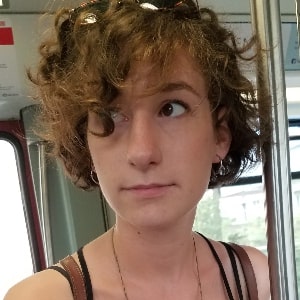
 After studying political science and the administration of cultural structures, Marie wrote an awarded master-thesis on the structuring of the field of contemporary dance in France through the history of the Maison de la Danse in Lyon.
After studying political science and the administration of cultural structures, Marie wrote an awarded master-thesis on the structuring of the field of contemporary dance in France through the history of the Maison de la Danse in Lyon.
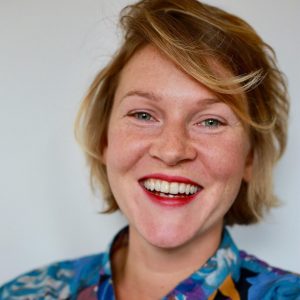
Tyśka Samborska- originally from Poland, she holds an MA from the Academy of Fine Arts in Venice and a BA in French Literature and Theater in Jagiellonian University in Cracow. She was studying performance art from artists such as Michikazu Matsune, Marisa Carnesky, Jurgen Fritzn, Johannes BBB Deimling or Alastaire MacLennan and has participated in various art residencies, performance festivals and exhibitions in Europe and Asia.
By working for Venice Biennale of Contemporary Art, Francois Pinault Foundation, Finnish Bioart Society or Capgemini, Tyśka also gained a solid administrative experience as an excecutive assistant, art events organizer and cultural mediator.
Tyska’s contribution to Elisabeth Schilling’s work was funded by the EU Erasmus for Young Entrepreneurs Programme.

Tyśka Samborska – ursprünglich aus Polen, hat einen Master of Arts von der Akademie der Bildenden Künste in Venedig und einen Bachelor of Arts in Französischer Literatur und Theater an der Jagiellonen-Universität in Krakau. Sie studierte Performance-Kunst von Künstlern wie Michikazu Matsune, Marisa Carnesky, Jurgen Fritzn, Johannes BBB Deimling oder Alastaire MacLennan und nahm an verschiedenen Kunstaufenthalten, Performance-Festivals und Ausstellungen in Europa und Asien teil.
Durch die Arbeit für die Biennale für zeitgenössische Kunst in Venedig, die Francois-Pinault-Stiftung, die Finnische Biokunstgesellschaft oder Capgemini hat Tyśka auch umfangreiche administrative Erfahrungen als leitende Assistentin, Organisatorin von Kunstveranstaltungen und Kulturvermittlerin gesammelt.
Tyska’s Mitarbeit wurde vom EU Erasmus for Young Entrepreneurs Programme finanziert.
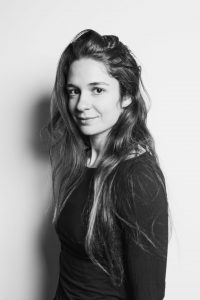
Giulia Cenni ist eine zeitgenössische Tänzerin und Performerin, die mit zahlreichen renommierten Kompanien und Choreographen zusammengearbeitet hat. Geboren und aufgewachsen mit einer Leidenschaft für den Tanz, vertiefte Giulia ihre Studien beim Balletto di Toscana unter der Leitung von Cristina Bozzolini. Bereits in jungen Jahren trat sie dem CieTwain Physical Dance Theatre bei und begann damit ihre professionelle Tanzkarriere. Im Laufe der Jahre nahm Giulia an Anton Lachkys Kreation auf der Biennale di Venezia 2014 teil und arbeitete für die Wee dance company am Gerhart Hauptmann Theater Görlitz und am Ballett Theater Pforzheim in Deutschland. Seit 2018 arbeitet sie mit Faso danse théâtre und dem Choreografen Serge Aimé Coulibaly zusammen und tritt in ganz Europa und Afrika auf. Ihr jüngstes Projekt, die Teilnahme an der Produktion “El Público” unter der Regie von Gustavo Ramirez Sansano, hat ihre Position als herausragende Tänzerin in der Welt des Tanzes weiter gefestigt.
Neben ihrer Tanzkarriere widmet sich Giulia seit vielen Jahren dem Studium des Yoga und beschäftigt sich aktiv mit verschiedenen Kampfkünsten wie Kung Fu und Kalaripayattu, einer traditionellen südindischen Kampfsportart, die sich neben Ayurveda und Yoga entwickelt hat.
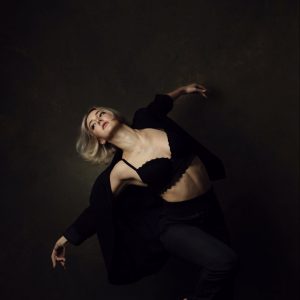
Alisha ist eine professionelle Tänzerin, die in Luxemburg lebt. Nach ihrem Abschluss am Institut der Künste in Barcelona tanzte sie in Jugendkompanien wie Elephant in the Black Box (Madrid) und The Nimble Project (München). Sie hat mit zahlreichen Choreographen wie Alessandro Sousa Pereira, Hannes Langolf, Emese Nagy, etc. zusammengearbeitet.
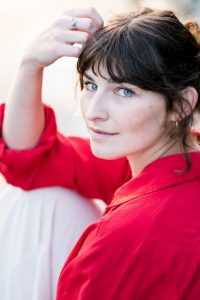
Born in Normandy (FR), Rosanne grew up in an artistic setting and fell under the spell of dance very early on. She studied ballet, contemporary and jazz dance at the Conservatoire of Rouen between 2009 and 2012.
In 2012, she joined the Ballet Junior de Genève, with whom she had the opportunity of working with internationally renowned choreographers and perform works by Marina Mascarell, Ioannis Mandafounis, Roy Assaf, Barak Marshall, Hofesh Shechter ..
In 2014 Rosanne co-founded Junebug Company, with Sophie Ammann and Erin O’Reilly. Together, they created several works mainly performed in Switzerland, Scotland and Ireland between 2015 and 2018.
Since she finished her training, Rosanne is freelancing through Europe. She joined company 7273 in 2017 for a takeover in Tarab and again for the creation of Nuit in 2019. She worked with Antonin Rioche for the creation of The Others and the short movie Finally a Sign of Life, The Cie Meyer Chaffaud for their creation #Soul4 and Body intelligence collective for the project digital umbilical amongst other projects.
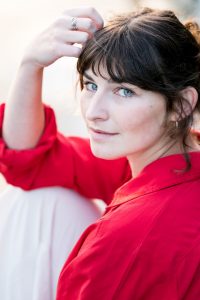
Geboren in der Normandie (FR), wuchs Rosanne in einem künstlerischen Umfeld auf und geriet schon früh in den Bann des Tanzes. Sie studierte zwischen 2009 und 2012 Ballett, zeitgenössischen Tanz und Jazz am Konservatorium von Rouen.
2012 trat sie dem Ballet Junior de Genève bei, mit dem sie die Möglichkeit hatte, mit international renommierten Choreographen zu arbeiten und Werke von Marina Mascarell, Ioannis Mandafounis, Roy Assaf, Barak Marshall, Hofesh Shechter … aufzuführen.
Im Jahr 2014 gründete Rosanne zusammen mit Sophie Ammann und Erin O’Reilly die Junebug Company. Gemeinsam schufen sie mehrere Werke, die zwischen 2015 und 2018 hauptsächlich in der Schweiz, Schottland und Irland aufgeführt wurden.
Seitdem sie ihre Ausbildung abgeschlossen hat, arbeitet Rosanne freiberuflich in ganz Europa. 2017 schloss sie sich der Kompanie 7273 für eine Übernahme in Tarab an und 2019 erneut für die Kreation von Nuit. Sie arbeitete unter anderem mit Antonin Rioche für die Kreation von The Others und den Kurzfilm Finally a Sign of Life, mit der Cie Meyer Chaffaud für deren Kreation #Soul4 und mit Body intelligence collective für das Projekt digital umbilical.

Giulia Cenni is a contemporary dancer and performer, who has collaborated with numerous prestigious companies and choreographers. Born and raised with a passion for dance, Giulia deepened her studies at Balletto di Toscana, under the direction of Cristina Bozzolini. At a young age, she joined CieTwain physical dance theatre, launching her professional dance career. Over the years, Giulia participated in Anton Lachky’s creation at La Biennale di Venezia in 2014 and worked for the Wee dance company at Gerhart Hauptmann Theater Görlitz and Ballett Theater Pforzheim in Germany. In 2018, she began collaborating with Faso danse théâtre and the choreographer Serge Aimé Coulibaly, performing across Europe and Africa. Her most recent venture, joining the production “El Público” directed by Gustavo Ramirez Sansano, has further solidified her position as a prominent dancer in the world of dance.
Aside from her dance career, Giulia has dedicated many years to the study of Yoga and has actively explored various martial arts such as Kung Fu and Kalaripayattu, a traditional South Indian martial art that developed alongside Ayurveda and Yoga.
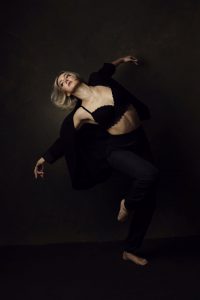
Alisha is a professional dancer based in Luxembourg. Graduating from the Institute of the Arts in Barcelona allowed her to dance in youth companies such as Elephant in the Black Box (Madrid) and The Nimble Project (Munich). She has performed pieces with numerous choreographers such as Alessandro Sousa Pereira, Hannes Langolf, Emese Nagy, etc.
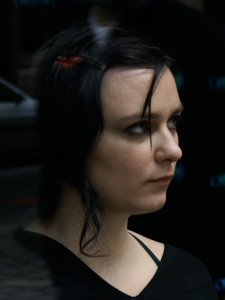

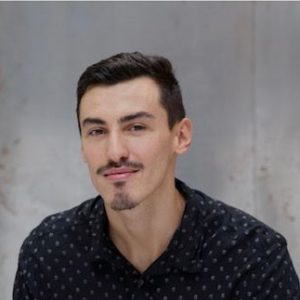
Stefane Meseguer Alves comes from Luxembourg and studied classical and contemporary dance at the Conservatory of the City of Luxembourg and the Frankfurter Hochschule für Musik und darstellende Kunst. After his studies he joined the Saarländisches Staatsballett for two seasons
After that he became a freelancer in Germany and became a member of the Donlon Dance Collective led by choreographer Marguerite Donlon in Theater für Niederschachen. Later Stefane performed in an Opera in Oper Frankfurt for Tobias Krazter.
He danced also in Hessisches Staatsballett and Theater Osnabrück after that. In Luxemburg he performed with Z-Art Company led by Giovanni Zazzera.
Stefane’s repertoire include choreographies from : Ivan Perez, Jiri Kylian, Mary Wigman, Stijn Celis, Kim Brandstrupp, Demis Volpi, Marguerite Donlon, Giovanni Zazzerra, David Dawson, Richard Siegal and Reiner Behr.
Jean-François BOUKOBZA holds the teacher’s diploma of music culture, the diploma of music school director and the teacher’s diploma of piano. He teaches analysis and aesthetics at the ‘Conservatoire National Supérieur de Musique et de Danse de Paris’, at the ‘Conservatoire à Rayonnement Régional d’Aubervilliers-La Courneuve’ and at the ‘Pôle Supérieur de Seine Saint-Denis’. From 1994 to 2002 he was a producer at ‘Radio Classique’ and writes regularly for the magazine ‘Avant-Scène Opéra’, for which he has written numerous studies on lyrical works of the 19th and 20th centuries. He is the author of books on Haydn, Bartók and Ligeti, and has contributed to several collected works, including The Operas of Peter Eötvös, published in the editions of the Archives Contemporaines or De la Libération au Domaine musical, ten years of musical life in France published by Vrin. A guest at colloquia, concert performances, radio and television broadcasts, he appears regularly as a lecturer in France and abroad. In prestigious places such as ‘Cité de la Musique, Philharmonie de Paris, Théâtre du Châtelet, ECMA, CNSMD de Paris and de Lyon, as well as in remote places such as neighboring houses, associations and amateurs or prisons, ambitious to carry the music to as many people as possible.
Jean-François BOUKOBZA verfügt über das Lehrerdiplom für Musikkultur, das Diplom des Musikschuldirektors und das Lehrerdiplom für Klavier. Er unterrichtet Analyse und Ästhetik am ‚Conservatoire National Supérieur de Musique et de Danse de Paris‘, am ‚Conservatoire à Rayonnement Régional d’Aubervilliers-La Courneuve‘ und am ‚Pôle Supérieur de Seine Saint-Denis.‘ Von 1994 bis 2002 war er Produzent bei ‚Radio Classique‘ und schreibt regelmäßig für die Zeitschrift ‚Avant-Scène Opéra‘, für die er zahlreiche Studien zu lyrischen Werken des 19. und 20. Jahrhunderts verfasste. Er ist Autor von Büchern über Haydn, Bartók und Ligeti, und wirkte an mehreren Sammelwerken mit, darunter Die Opern von Peter Eötvös, erschienen in den Editionen des Archives Contemporaines oder De la Libération au Domaine musical, zehn Jahre Musikleben in Frankreich im Verlag Vrin. Als Gast bei Kolloquien, Konzertauftritten, Rundfunk- und Fernsehsendungen tritt er regelmäßig als Dozent in Frankreich und im Ausland auf. An renommierten Orten wie zum Beispiel ‚Cité de la Musique, Philharmonie de Paris, Théâtre du Châtelet, ECMA, CNSMD de Paris und de Lyon, sowie an abgelegenen Orten, wie in Nachbarhäusern, Verbänden und Amateure oder Gefängnisse, ambitioniert, die Musik so vielen Menschen wie möglich zu tragen.
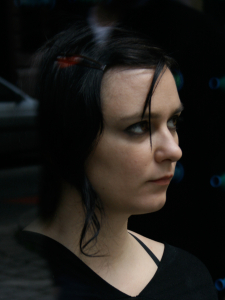
Grew up in Vojvodina in the former Yugoslavia as part of the Hungarian minority. Since 2004 she has been working as a freelance artist, costume and stage designer for theatre and film and has worked with directors including: Matthias von Stegmann, Margit Mezgolich, Esther Muschol, Anne Simon, Jean Michel Bruyère, Boris C. Motzki, Peter Kern, Gernot Plass, Houchana Allahyari, Goldfarb&Goldfarb, Dàniel Bères. She has had numerous group and solo exhibitions in renowned galleries in Austria, Hungary, Canada, Slovenia and Romania.
Ágnes Hamvas lives and works in Vienna.
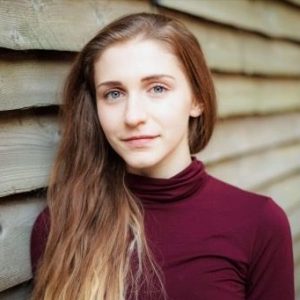
Marla is a Welsh freelance dance artist, and has worked on projects with Rhiannon Faith Company, Rendez-Vous Dance, Eleesha Drennan, Sweetshop Revolution, Jack Philp, Gwyn Emberton and Impelo. She graduated with a first-class BA(Hons) degree from Northern School of Contemporary Dance in 2019 and during her time there performed works by Charlie Morrissey, Humanhood and Antonia Grove, along with self-choreographed solo works. Following this, she became an apprentice with National Dance Company Wales, working with choreographers including Alexandra Waierstall, Fearghus O’Conchuir, Nikita Goile, Ed Myhill and Anthony Matsena.
Marla is deepening explorations of her choreographic craft through a recent commission from Artscape focused on engaging community in climate awareness and action, inviting a challenge of perspective on how we perceive our connection with nature and influence on the natural world through our actions. This has developed into a slow touring pilot through support from Arts Council Wales and the Ashley Family Foundation. She also received a choreographic commission as part of the Supporting Acts Programme developed by Richard Chappell Dance, collaborating with musician Anna Phillips, in the process and performance of the work. Alongside performance and choreographic work, she has shared movement workshops with young people, adult community classes and teaching professional company class during projects.
Marla also works on a freelance basis for SAIL, an arts organisation based in Leeds, who are supporting the creative and cultural sector to feel empowered to take climate action. This work involves delivering workshops around climate awareness and ways to take action in meaningful, justice centred and sustainable capacities. This has also led to working as an environment officer for Voxed Dance Company. She is an ambassador for, and on the board of, the Resilience Project which aims empower young people and activists who are experiencing climate anxiety and burnout to build resilience, emotional awareness and foster communities for collective care and wellbeing.
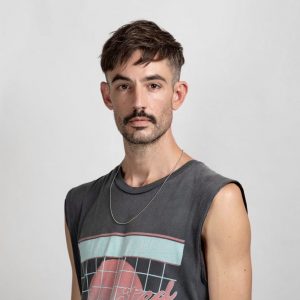

Julien wird am Ausbildungszentrum Epsedanse in Montpellier in Klassik, Jazz und zeitgenössischem Tanz ausgebildet. Im Jahr 2009 erhielt er einen Platz beim Genfer Junior Ballett, wo er mit Choreographen wie Hofesh Shechter, Andonis Foniadakis und Alexander Ekman zusammenarbeitete. Ein Jahr später schloss er sich der Kompanie Alias an und setzte dann seine Karriere beim Nationalballett von Marseille unter der Leitung von Frédéric Flamand fort. Dort lernte er Olivier Dubois kennen, der ihn, nachdem er ihn zum Tanzen gebracht hatte, als Assistent für die Neuinszenierung seines Stücks “Élégie” engagierte.
Ende 2014 kam Julien nach Paris und schloss sich der Crew des Musicals “Resiste” an, das von Marion Motin choreografiert wurde. Danach arbeitete er mit ihr bei der Fashion Freak Show von Jean Paul Gaultier und kürzlich bei ihrem choreografischen Stück “Le Grand Sot” zusammen. Parallel dazu kreiert Julien seine eigenen Choreografien, insbesondere für die Serie “L’Opera”.

Stefane Meseguer Alves stammt aus Luxemburg und studierte klassischen und zeitgenössischen Tanz am Konservatorium der Stadt Luxemburg und an der Frankfurter Hochschule für Musik und darstellende Kunst. Nach seinem Studium wurde er für zwei Spielzeiten Mitglied des Saarländischen Staatsballetts.
Danach arbeitete er als Freiberufler in Deutschland und wurde Mitglied des Donlon Dance Collective unter der Leitung der Choreografin Marguerite Donlon im Theater für Niederschachen. Später trat Stefane in einer Oper in der Oper Frankfurt für Tobias Krazter auf.
Danach tanzte er auch im Hessischen Staatsballett und im Theater Osnabrück. In Luxemburg trat er mit der Z-Art Company unter der Leitung von Giovanni Zazzera auf.
Stefane’s Repertoire umfasst Choreographien von: Ivan Perez, Jiri Kylian, Mary Wigman, Stijn Celis, Kim Brandstrupp, Demis Volpi, Marguerite Donlon, Giovanni Zazzerra, David Dawson, Richard Siegal und Reiner Behr.

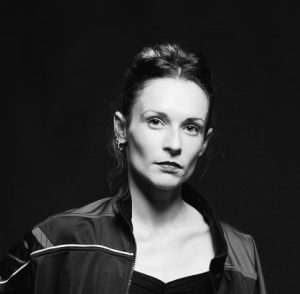 Lou begann im Alter von 5 Jahren in ihrer Heimatstadt zu tanzen. Im Jahr 2012 schloss sie sich dem Ballet Junior de Genève an, wo sie Werke von renommierten Choreografen wie Andonis Foniadakis oder Hofesh Schechter tanzte. 2016 schloss sie sich dem Kamea Dance Cie in Israel an, wo sie unter anderem Werke des Regisseurs Tamir Ginz, aber auch von Nacho Duato und Marco Goecke tanzte. Seit 2020 ist sie als Gasttänzerin am Grand Théâtre de Genève engagiert und arbeitet seitdem als freischaffende Tänzerin.
Lou begann im Alter von 5 Jahren in ihrer Heimatstadt zu tanzen. Im Jahr 2012 schloss sie sich dem Ballet Junior de Genève an, wo sie Werke von renommierten Choreografen wie Andonis Foniadakis oder Hofesh Schechter tanzte. 2016 schloss sie sich dem Kamea Dance Cie in Israel an, wo sie unter anderem Werke des Regisseurs Tamir Ginz, aber auch von Nacho Duato und Marco Goecke tanzte. Seit 2020 ist sie als Gasttänzerin am Grand Théâtre de Genève engagiert und arbeitet seitdem als freischaffende Tänzerin.

Marla ist eine walisische freischaffende Tanzkünstlerin und hat an Projekten mit Rhiannon Faith Company, Rendez-Vous Dance, Eleesha Drennan, Sweetshop Revolution, Jack Philp, Gwyn Emberton und Impelo gearbeitet. Sie schloss 2019 mit einem erstklassigen BA(Hons)-Abschluss an der Northern School of Contemporary Dance ab und führte während ihrer Zeit dort Werke von Charlie Morrissey, Humanhood und Antonia Grove sowie selbst choreografierte Solostücke auf. Anschließend wurde sie Lehrling bei der National Dance Company Wales und arbeitete mit Choreografen wie Alexandra Waierstall, Fearghus O’Conchuir, Nikita Goile, Ed Myhill und Anthony Matsena.
Marla vertieft die Erforschung ihres choreografischen Handwerks durch einen kürzlich erteilten Auftrag von Artscape, der sich darauf konzentriert, die Gemeinschaft in das Klimabewusstsein und -handeln einzubeziehen, und der dazu einlädt, die Perspektive darauf zu ändern, wie wir unsere Verbindung mit der Natur und unseren Einfluss auf die natürliche Welt durch unser Handeln wahrnehmen. Dieses Projekt wurde mit Unterstützung des Arts Council Wales und der Ashley Family Foundation zu einem langsam tourenden Pilotprojekt. Außerdem erhielt sie einen choreografischen Auftrag im Rahmen des von Richard Chappell Dance entwickelten Supporting Acts Programme, bei dem sie mit der Musikerin Anna Phillips zusammenarbeitete und das Werk aufführte. Neben ihrer Performance- und Choreografiearbeit hat sie Bewegungsworkshops mit Jugendlichen und Erwachsenen durchgeführt und während der Projekte professionelle Kompanieklassen unterrichtet.
Marla arbeitet außerdem auf freiberuflicher Basis für SAIL, eine Kunstorganisation mit Sitz in Leeds, die den Kreativ- und Kultursektor dabei unterstützt, sich in die Lage zu versetzen, Klimaschutzmaßnahmen zu ergreifen. Im Rahmen dieser Arbeit führt sie Workshops zum Thema Klimabewusstsein durch und zeigt Wege auf, wie man auf sinnvolle, gerechte und nachhaltige Weise aktiv werden kann. Dies hat auch zur Arbeit als Umweltbeauftragte für die Voxed Dance Company geführt. Sie ist Botschafterin und Vorstandsmitglied des Resilience Project, dessen Ziel es ist, junge Menschen und Aktivisten, die unter Klimaangst und Burnout leiden, zu befähigen, Widerstandsfähigkeit und emotionales Bewusstsein aufzubauen und Gemeinschaften für kollektive Fürsorge und Wohlbefinden zu fördern.
 Lou started dancing in her hometown at the age of 5. In 2012 she join Ballet Junior de Genève where she danced works of renowned choreographer like Andonis Foniadakis or Hofesh Schechter. In 2016 she joined Kamea Dance Cie in Israël, dancing works of the director Tamir Ginz, but also Nacho Duato and Marco Goecke among others. In 2020 she joined Grand Théâtre de Genève as a guest dancer and is since then a free-lance dancer.
Lou started dancing in her hometown at the age of 5. In 2012 she join Ballet Junior de Genève where she danced works of renowned choreographer like Andonis Foniadakis or Hofesh Schechter. In 2016 she joined Kamea Dance Cie in Israël, dancing works of the director Tamir Ginz, but also Nacho Duato and Marco Goecke among others. In 2020 she joined Grand Théâtre de Genève as a guest dancer and is since then a free-lance dancer.
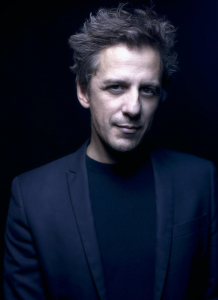
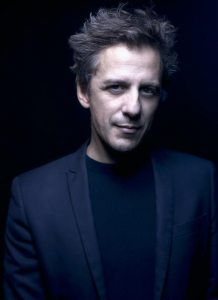
Pascal Schumacher is without doubt one of the most versatile musicians of his generation. The musical influences from which he develops his always authentic total works of art are manifold – as a vibraphonist, composer, bandleader or sound director,
composer, bandleader or sound director. He has played together with such exciting musicians as Maxime Delpierre, Francesco Tristano, Bachar Mar Khalifé, Jef Neve, Kenny Barron, Magic Malik, Rabih Abou-Khalil, Nelson Veras and Nils Frahm. He fuses emotional classical music with minimalist electronic sounds to create what is called modern classical music – but for Schumacher himself, any classification is obsolete. For him, music is one boundless playground.
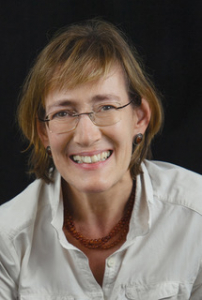
Stephanie Schroedter has been working at the interface of music, dance and theatre since completing her doctorate in music/dance studies in Salzburg (2001, awarded the North Rhine-Westphalia Dance Science Prize). In addition to designing and contributing to FWF-, DFG- and SNF-funded research projects, she has held professorships in music, dance, theatre and media studies (Bern, Bayreuth, Berlin, Heidelberg, etc.). In 2015 she habilitated at the Free University of Berlin and received the venia legendi for dance and music studies. She has organised several international symposiums with a thematic focus on music/dance theatre and performance and publishes on relevant topics in relevant journals and anthologies – in addition to her lecturing activities in Europe, Canada and the USA. She has been continuing her DFG-funded research project “Bodies and Sounds in Movement”, which began in 2017 at the Free University of Berlin and involves developing methods of music-choreographic and sound-performative staging and performance analysis, since March 2021 as part of her professorship for “Theories of Music and Movement/Rhythm” at the University of Music and Performing Arts Vienna (mdw).
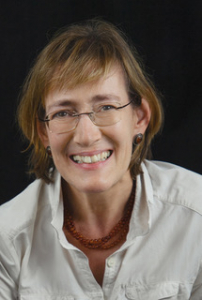
Stephanie Schroedter arbeitet seit ihrer musik-/tanzwissenschaftlichen Promotion in Salzburg (2001, Auszeichnung mit dem Tanzwissenschaftspreis Nordrhein-Westfalen) an der Schnittstelle von Musik, Tanz und Theater. Neben der Konzeption und Mitwirkung an FWF-, DFG- und SNF-geförderten Forschungsprojekten vertrat sie Professuren für Musik-, Tanz-, Theater- und Medienwissenschaft (Bern, Bayreuth, Berlin, Heidelberg etc.). 2015 habilitierte sie sich an der Freien Universität Berlin und erhielt die Venia legendi für Tanz- und Musikwissenschaft. Sie organisierte mehrere internationale Symposien mit thematischen Schwerpunkten im Bereich Musik-/Tanztheater und Performance und publiziert zu entsprechenden Themenfeldern in einschlägigen Fachjournalen und Sammelbänden – neben ihrer Vortragstätigkeit in Europa, Kanada und den USA. Ihr 2017 an der FU Berlin begonnenes, von DFG gefördertes Forschungsprojekt „Körper und Klänge in Bewegung“, in dessen Rahmen Methoden einer musikchoreographischen bzw. klangperformativen Inszenierungs- und Aufführungsanalyse erarbeitet werden, setzt sie seit März 2021 im Rahmen ihrer Professur für „Theorien von Musik und Bewegung/Rhythmik“ an der Universität für Musik und Darstellende Kunst Wien (mdw) fort.
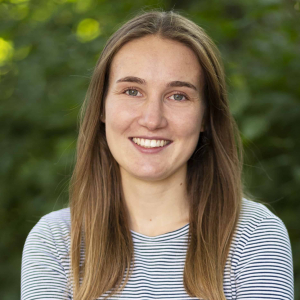 Johanna Schmitt
Johanna Schmitt
Johanna Schmitt is a Master’s student in educational science at Otto von Guericke University Magdeburg. Besides her studies she is involved in political education work and takes over many administrative tasks in voluntary work.
 Johanna Schmitt
Johanna Schmitt
Johanna Schmitt ist eine Masterstudentin im Fach Bildungswissenschaft an der Otto von Guericke Universität Magdeburg. Neben ihrem Studium engagiert sie sich in der politischen Bildungsarbeit und übernimmt viele administrative Aufgaben in ehrenamtlichen Tätigkeiten.
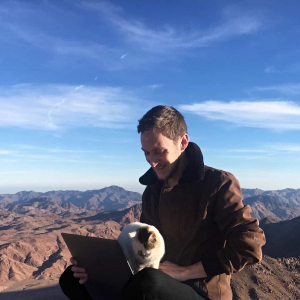
Emile ist Kunstkritiker, Kunstschaffender und Berater in Luxemburg. Er hat sich auf die grenzüberschreitende kulturelle Zusammenarbeit spezialisiert, wobei seine Erfahrungen von internationalen Beziehungen bis hin zur künstlerischen Leitung reichen. Im Bereich der Kulturdiplomatie arbeitete er insbesondere als Sekretär von Jack Lang, dem ehemaligen französischen Staatsminister für Kultur, Kommunikation und Bildung.
Emile entwickelt derzeit Projekte im Bereich der immersiven Kunst (Fulldome, VR) und der Lichtkunst (Vergoldung, Verglasung) mit einem großen Interesse an phänomenologischer Ästhetik. Er beschäftigte sich mit einem breiten Spektrum künstlerischer Disziplinen – Ausstellungskuratierung, Tanztheaterinszenierung, digitale Kunstproduktion, Festivalprogrammierung – und veröffentlichte diverse kritische Rezensionen.
Neben dem Konservatorium wurde er an der Khâgne-Hypokhâgne ,de la Tour’ ausgebildet. Das vorbereitende Studium der Geisteswissenschaften führte ihn zu einem Studium der Philosophie, Kunstkritik und des Kulturmanagements an den Universitäten Luxemburg, Metz und Straßburg. Emile lebte auch in Paris, Wien, Lissabon, Kairo und Mcleodganj im westlichen Himalaya-Gebirge.

Jon ist ein erfahrener Produzent mit einem diversen Hintergrund in den Bereichen Kreativität, Management und Produktion. Er studierte Tanztheater an der Laban University und machte 2011 seinen Abschluss, was seine Produktionskarriere prägte.
Zwischen 2011 und 2020 arbeitete Jon für zahlreiche Künstler und Kulturorganisationen und produzierte Werke für Bühne, Tournee, Film, Fernsehen und spezielle Projekte. Er produzierte auch international und in ganz Europa, arbeitete im Auftrag des British Council, des Arts Council, der Andrew Lloyd Webber Foundation und Creative & Cultural Skills. Heute lebt Jon in Basel (Schweiz) und arbeitet als freiberuflicher Produzent, ausführender Produzent und technischer Leiter für eine Reihe von Projekten. Sein Ziel ist es, wirklich zugängliche, integrative und vielfältige Erlebnisse zu schaffen, die dieser Welt mehr geben als sie ihr nehmen.
Jon is an experienced Producer with a diverse background in creativity, management and production. He studied Dance Theatre at Laban, graduating in 2011 and this has defined his production career.
Between 2011 and 2020 Jon worked for numerous artists and cultural organisations producing work for stage, touring, film, TV and special projects. He has also produced internationally and across Europe working on behalf of the British Council, the Arts Council, the Andrew Lloyd Webber Foundation and Creative & Cultural Skills. Now based in Basel, Switzerland, Jon is working as a freelance Producer, Executive Producer and Technical Director across a number of projects. He is driven to create truly accessible, inclusive and diverse experiences which give more to this world than they take away.
Die in Irland geborene Aifric Ní Chaoimh arbeitet in Luxemburg als Tanzkünstlerin, Lehrerin und Choreografin. Sie ist Absolventin der London Contemporary Dance School und erwarb einen erstklassigen BA(Hons) in zeitgenössischem Tanz (2013). Während ihres Studiums nahm sie an einem Austauschprogramm am SUNY Purchase College in New York teil. In Großbritannien und Irland hat sie mit Itamar Serussi (IL), Igor & Moreno (UK), Alex Howard (UK), Imogen Knight (UK) und Michael Keegan Dolan /Fabulous Beast (IRE) gearbeitet. In Luxemburg und der Großregion ist sie für Jean-Guillaume Weis / Dance Theater Luxembourg, (Sehnsucht ’21, Bucketful of Dreams ’17), Hannah Ma (Nussknacker das Fest ’19 und Wanderer ’17) sowie für das Theater Trier, die Philharmonie, Elisabeth Schilling, Simone Mousset, Compagnie Les Affamés und Maher Abdul Moaty aufgetreten. Aifric ist derzeit aktives Mitglied von Lucoda und wird 2021 in zwei Stücken von Rhiannon Morgan auftreten.
In ihrer eigenen choreografischen Arbeit hat sie 2017 mit der Sängerin Gemma Dunleavy (IRE) und dem Tanzkünstler Daniel Persson (SE) an der Kreation von Inside, the Wolf… zusammengearbeitet. 2019/2020 choreografierte sie gemeinsam mit Stefano Spinelli (LU) das Jugendtanzprojekt Melusina’s Moves, das in luxemburgischen Schulen aufgeführt wurde, und zuletzt choreografierte sie für das Community-Tanzprojekt Voix Moi von Lucoda (2021). Außerdem hat sie ihr erstes Screendance-Stück Auto (2021) geschaffen.
Darüber hinaus interessiert sich Aifric besonders für die Überschneidung von künstlerischer und sozialer Arbeit und hat im Rahmen von Projekten der Vereine Mir wëllen iech ons Heemecht Weisen/ The Red Cross, Creamisu, Sportunity, Trisomie21, Alter&Go, Creamisu und Kinesiphilia Tanzunterricht für Obdachlose, Flüchtlinge, Behinderte und Parkinson-Patienten erteilt und unterrichtet regelmäßig in Schulen und Workshops in der Großregion.
Irish-born Aifric Ní Chaoimh works in Luxembourg as a dance artist, teacher and choreographer. She is a graduate of London Contemporary Dance School, earning a first class BA(Hons) in Contemporary Dance (2013). During her studies she took part in an exchange programme at SUNY Purchase College in New York. In the UK and Ireland, she has worked with Itamar Serussi (IL), Igor & Moreno (UK), Alex Howard (UK), Imogen Knight (UK) and Michael Keegan Dolan /Fabulous Beast (IRE). In Luxembourg and The Greater Region, she has performed for Jean-Guillaume Weis / Dance Theater Luxembourg, (Sehnsucht ’21, Bucketful of Dreams ’17), Hannah Ma (Nussknacker das Fest ’19 and Wanderer ’17) as well as for Theater Trier, the Philharmonie, Elisabeth Schilling, Simone Mousset, Compagnie Les Affamés and Maher Abdul Moaty. Aifric is currently an active member of Lucoda, performing in two pieces by Rhiannon Morgan in 2021.
Within her own choreographic work she has collaborated with singer Gemma Dunleavy (IRE), and dance artist Daniel Persson (SE) in 2017, on the creation of Inside, the Wolf… . In 2019/2020 she collaborated with Stefano Spinelli (LU) in choreographing the youth dance project Melusina’s Moves which was performed in schools in Luxembourg and she has most recently choreographed in the community dance project Voix Moi by Lucoda (2021). She has also created her first screendance work Auto (2021).
In addition, Aifric is particularly interested in the intersection of artistic and social work and has taught dance for homeless, refugee, disability and Parkinsons groups as part of the projects carried out by the associations Mir wëllen iech ons Heemecht Weisen/ The Red Cross, Creamisu, Sportunity, Trisomie21, Alter&Go, Creamisu and Kinesiphilia, and teaches regularly in schools and workshop in the Greater Region.
Born in Scotland, Malcolm completed his professional training at the Central School of Ballet in London. After a year as an apprentice with Ballet Basel, Malcolm was hired as a member of the ballet company at the Staatstheater Nürnberg. He spent seven years in Nürnberg dancing in works by choreographers such as: Jiri Kylian, Nacho Duato, Ohad Naharin, Mats Ek, Johan Inger and Crystal Pite among others. Since leaving the company to work as a freelance artist, Malcolm has participated in several projects including: Klever Dance Company, Tanztheater Luxembourg, Focus Dance, Shang-Chi Sun Company, Kollektiv 52°07, Shaper/Caper, Interdans Festival, Choreolab Ulm, and Dumfries & Galloway Dance. Malcolm has also choreographed numerous stage works, including three full-length productions. He completed his MA Choreography with distinction. Malcolm has worked as a choreographic assistant/rehearsal director on projects in Berlin, Malaga and Luxembourg.
Der in Schottland geborene Malcolm absolvierte seine professionelle Ausbildung an der Central School of Ballet in London. Nach einem Jahr als Lehrling beim Ballett Basel, wurde Malcolm als Mitglied des Balletts am Staatstheater Nürnberg engagiert. Er verbrachte sieben Jahren in Nürnberg und tanzte in Werken von Choreographen wie: Jiri Kylian, Nacho Duato, Ohad Naharin, Mats Ek, Johan Inger und Crystal Pite und anderen. Seit er die Kompanie verlassen hat, um als freischaffender Künstler zu arbeiten, hat Malcolm in mehreren Projekten mitgewirkt, darunter: Klever Dance Kompanie, Tanztheater Luxemburg, Focus Dance, Kompanie Shang-Chi Sun, Kollektiv 52°07, Shaper/Caper, Interdans Festival, Choreolab Ulm und Dumfries & Galloway Dance. Malcolm hat außerdem zahlreiche Choreografien für Bühnenwerke herausgebracht, darunter drei abendfüllende Produktionen. Er schloss seinen MA Choreografie mit Auszeichnung ab. Malcolm hat als choreografischer Assistent/Probenleiter bei Projekten in Berlin, Malaga und Luxemburg.
Elisabeth Christine Holth
Elisabeth Christine Holth erhielt ihr Diplom- und ihren Bachelor-Ab- schluss in klassischem Ballett an der Osloer Nationalen Kunstakademie. Nach ihrem Abschluss im Jahr 2008 wurde sie Mitglied des Conservatoi- re National Supérieur de musique et danse de L yon, im Jugend-Ballett. Von da an hatte sie die Möglichkeit mit dem Norwegischen Nationalbal- lett sowie in Deutschland und Frankreich zu tanzen.
Sie hat an Theaterworkshops mit der Theaterregisseurin und Coachin Po- lina Klimovitskaya sowie dem Filmregisseur Pascal Luneau teilgenommen. Heute lebt sie als freischaffende Tänzerin und pendelt zwischen Stockholm und Oslo. Dort arbeitet sie unter anderem mit Karlsen/Pratt, Kompanie B. Valiente, Odd Johan Fritzøe und Cristina Tingskog. Mit Karlsen/Pratt tanzte sie auch im Musikvideo der norwegischen Singer/Songwriterin Susanna ‚Hole‘ im Jahr 2016. Sie genießt Kollaborationen über Genregrenzen hin- aus und arbeitet oft mit MusikerInnen und SchauspielerInnen zusammen. Während ihrer Tourneen gibt sie auch Workshops in der lokalen Gemein- schaft und teilt ihre Liebe zur Kunst. Nachdem E. Schilling Elisabeth bei ei- nem Auftritt in Norwegen gesehen hatte, kamen sie sich schnell entgegen: im Jahr 2020 wurde sie eingeladen, als Tänzerin bei ‚Hear Eyes Move‘ mit E. Schilling mitzuwirken.
Elisabeth ist halb Norwegisch und halb Britisch. Sie spricht fließend norwegisch, britisch und Französisch; sie hat ein Diplom der Universität Oslo in französischer Kulturgeschichte
Elisabeth Christine Holth
Elisabeth Christine Holth received her diploma and bachelor degree in classical ballet fromt Oslo’s National Academy of the Arts. After graduat- ing in 2008 she joined the Conservatoire National Supérieur de musique et danse de Lyon, Jeune Ballet. She has from thereon had the opportunity to dance with the Norwegian National Ballet, as well as in Germany and France. She has also taken theatre workshops with theatre director and coach, Polina Klimovitskaya and film director, Pascal Luneau.
Now based between Stockholm and Oslo as a freelance dancer, working with Karlsen/Pratt, Company B. Valiente, Odd Johan Fritzøe and Cristina Tingskog to name a few.
With Karlsen/Pratt she also danced in Norwegian singer/songwriter Su- sanna’s music video ‘Hole’ in 2016. She truly enjoys collaborating across her art form and works with musicians and actors. While touring she also reaches out to the local community to give workshops and share her love of the arts. After E. Schilling saw Elisabeth perform in Norway – they quickly bonded and in 2020 she was invited to join as a dancer for ‘Hear Eyes Move’.
Elisabeth is half Norwegian and half British. She is fluent in Norwegian, English and French, and received a diploma from the University of Oslo in French Cultural History.
Brian Ca
Brian Ca ist ein vielseitiger Tänzer, der in zeitgenössischem, klassischem und Hip-Hop-Tanz ausgebildet ist. Er begann seine professionelle Ausbildung am Conservatoire National Supérieur de Musique et Danse de Lyon und schloss sich zwei Jahre später dem Ballet Junior de Genève an, um seine technische Bandbreite zu bereichern. Im Laufe seiner Karriere führte er 35 eklektische, choreografische Werken auf, die von den explosiven Energien Wayne Mac Gregors bis zu den geschmeidigen Qualitäten von Hofesh Schechter reichen. Vornehmlich in den Hauptrollen tanzte er in Werken von verschiedenen Kompanien darunter Richard Siegal, Andonis Foniadakis, Opéra du Rhin, Damien Jalet, Joëlle Bouvier, Angelin Prejlocaj in verschiedenen Kompanien aufzuführen, darunter das Scottish Dance Theater und die Compagnie Grenade.
Im Oktober 2017 agierte er aufgrund seiner pädagogischen Qualitäten zum Assistenten von Douglas Becker. Im Anschluss war Brian Ca bei verschiedenen Institutionen (CNSMD, Eastmann Summer Intensive, u.a….) tätig, um das Repertoire von D. Becker und William Forsythe zu vermitteln. Nebenher entwickelte Brian Ca seine eigene künstlerische Arbeit, wobei er sich auf Psychologie, Neurologie und digitale Kunst konzentriert. Im Rahmen dieser Arbeit sucht er eine neue Ästhetik der menschlichen Bewegung, die sich aus der choreografischen Vielfalt nährt, die er durch seine Experimente erworben hat.
Brian Ca
Brian Ca is a versatile dancer, trained in contemporary, classical and hip-hop dance. He began his professional training at the Conservatoire National Supérieur de Musique et Danse de Lyon and joined the Ballet Junior de Genève two years later to enrich his technical range. Over the course of his career, he has performed 35 eclectic choreographic works, ranging from the explosive energies of Wayne Mac Gregor to the supple qualities of Hofesh Schechter. Mainly in the leading roles, he has danced in works by various companies including Richard Siegal, Andonis Foniadakis, Opéra du Rhin, Damien Jalet, Joëlle Bouvier, Angelin Prejlocaj in various companies including the Scottish Dance Theater and the Compagnie Grenade.
In October 2017 he acted as assistant to Douglas Becker due to his pedagogical qualities. Brian Ca has subsequently worked at various institutions (CNSMD, Eastmann Summer Intensive, etc.) to teach the repertoire of D. Becker and William Forsythe. In addition, Brian Ca developed his own artistic work, focusing on psychology, neurology and digital art. In the context of this work he seeks a new aesthetics of human movement, which nourished by the choreographic diversity he has acquired through his experiments.
Daniel Jones comes from Luxembourg and studied political science at the Free University of Brussels in Brussels. Besides his studies, he worked as a freelancer at the Trifolion House of Culture and Congress, where he replaced the position of project manager in the summer of 2021. During this time he had the chance to work with Elisabeth Schilling, resulting in the current continued collaboration.
In September 2021, he officially continues his work as project manager at the Trifolion full-time and is looking forward to new challenges.
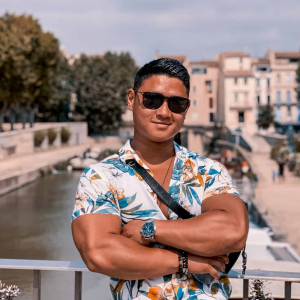 Daniel Jones kommt aus Luxemburg und hat Politikwissenschaft an der Freien Universität Brüssel in Brüssel studiert. Neben dem Studium arbeitete er als Freelancer im Kultur- und Kongresshaus Trifolion, wo er im Sommer 2021 die Stelle des Projektmanagers ersetzt hat. Während dieser Zeit hatte er die Chance mit Elisabeth Schilling zusammenzuarbeiten, wodurch die jetzige weitere Zusammenarbeit resultiert.
Daniel Jones kommt aus Luxemburg und hat Politikwissenschaft an der Freien Universität Brüssel in Brüssel studiert. Neben dem Studium arbeitete er als Freelancer im Kultur- und Kongresshaus Trifolion, wo er im Sommer 2021 die Stelle des Projektmanagers ersetzt hat. Während dieser Zeit hatte er die Chance mit Elisabeth Schilling zusammenzuarbeiten, wodurch die jetzige weitere Zusammenarbeit resultiert.
Im September 2021 setzt er seine Arbeit als Projektmanager im Trifolion offiziell in Vollzeit fort und freut sich auf neue Herausforderungen.
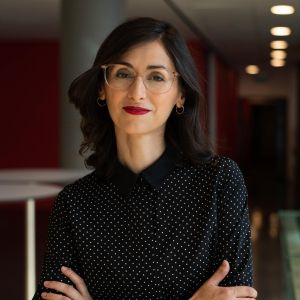 Eva Martinez ist Kuratorin, Produzentin, Dramaturgin und Coach für darstellende Künste. Zuletzt war sie Artistic Programmer bei Sadler’s Wells in London (2013-2020), wo sie für das Lilian Baylis Studio ein Programm kuratierte, das im Besonderen KünstlerInnen aus Großbritannien neben den renommiertesten internationalen Arbeiten präsentierte und neue KünstlerInnen auf die Hauptbühne brachte. Sie leitete die Künstlerentwicklung und Recherche für dieses renommierte Tanzhaus und unterstützte eine neue Generation von KünstlerInnen dabei, ihre künstlerische Stimme zu festigen und einem großen Publikum neue Perspektiven zu vermitteln. Vor dieser Tätigkeit war sie Dance and Performance Programmer am Southbank Centre, London (2009-2011), Europas größtem Kunstzentrum.
Eva Martinez ist Kuratorin, Produzentin, Dramaturgin und Coach für darstellende Künste. Zuletzt war sie Artistic Programmer bei Sadler’s Wells in London (2013-2020), wo sie für das Lilian Baylis Studio ein Programm kuratierte, das im Besonderen KünstlerInnen aus Großbritannien neben den renommiertesten internationalen Arbeiten präsentierte und neue KünstlerInnen auf die Hauptbühne brachte. Sie leitete die Künstlerentwicklung und Recherche für dieses renommierte Tanzhaus und unterstützte eine neue Generation von KünstlerInnen dabei, ihre künstlerische Stimme zu festigen und einem großen Publikum neue Perspektiven zu vermitteln. Vor dieser Tätigkeit war sie Dance and Performance Programmer am Southbank Centre, London (2009-2011), Europas größtem Kunstzentrum.
Eva Martinez is a performing arts curator, producer, dramaturge and coach. She was most recently Artistic Programmer at Sadler’s Wells in London (2013-2020) where she curated a programme showcasing distinctive artists based in the UK alongside the best of international work for the Lilian Baylis Studio, as well as introducing new artists to the mainstage. She led on artist development and research for this most prestigious dance house, supporting a new generation of makers to consolidate their artistic voices, bringing new perspectives to a large audience. Prior to this role, she was Dance and Performance programmer at Southbank Centre, London (2009-2011), Europe’s largest arts centre.
Born and educated in France with a Spanish heritage, she moved to the UK in 2000 and is currently based in London. She joined Trinity Laban (2002-2006) as the school moved into their award-winning building, then joined national dance agency Dance4 (Nottingham, 2006-2009) where she managed the delivery of nottdance, a distinctive international festival of new movements in dance, taking her first steps as curator.
Now freelance with 20 years’ experience, Eva is focusing on her practice as coach, mentor and dramaturge with dance artists and change makers. She is a sought-after curator and consultant, collaborating with an extended network of cultural organisations internationally; she is known for her empowering and facilitative approach to talent development, for her championing of experimentation and diversity, and specifically for supporting the rebalancing of inequities in relation to gender and racial structural discrimination.
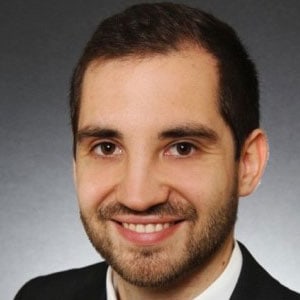 The vault manager for finances
The vault manager for finances
Sebastian Simon was born in Trier in 1989 and studied business administration at Bachelor and Master level in Trier and Hamburg. Since 2018, he has been working in the audit practice at PwC Luxembourg. He has been following the work of Elisabeth Schilling since 2013 and has been supporting a.s.b.l. since 2017, primarily in questions of economic and financial management.
Der Tresorchef für Finanzen
Sebastian Simon wurde 1989 in Trier geboren und studierte BWL auf Bachelor und Master in Trier und Hamburg. Seit 2018 ist er bei PwC Luxembourg in der Wirtschaftsprüfung tätig. Seit 2013 verfolgt er die Arbeit Elisabeth Schillings und unterstützt die a.s.b.l. seit 2017 vornehmlich in Fragen des Wirtschafts- und Finanzmanagements.
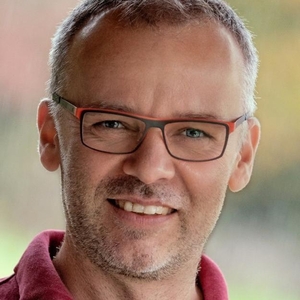 Jürgen Greis ist Master zertifizierter Therapeut für myofasziales Taping und Faszien Integration der Markus Erhard Academy und ausgebildeter Faszien Trainer durch die Deutschen Trainer Akademie in Köln.
Jürgen Greis ist Master zertifizierter Therapeut für myofasziales Taping und Faszien Integration der Markus Erhard Academy und ausgebildeter Faszien Trainer durch die Deutschen Trainer Akademie in Köln.
Durch die Anwendung der revolutionären Technik des myofaszialen Tapings und Faszien Integration auf den Gebieten Schmerztherapie, Leistungssteigerung im Sport kann Jürgen in der Zwischenzeit auf ein breites und internationales Klientel aus Deutschland, Frankreich und Luxemburg aus den Bereichen Business, Kultur und Sport zurückgreifen.
Neben Elisabeth Schillings Tänzern betreut Jürgen auch Athleten aus den Leistungssportbereichen des Fußballs, Basketballs und der Leichtathletik und ist gefragter Faszientherapeut im Bereich Schmerztherapie und Leistungssteigerung im Sport.
Im Juli 2017 gründete Jürgen gemeinsam mit seiner Geschäftspartnerin Carina Stock die Gesundheits- und Physiotherapiepraxis Fit-Konzept (www.fit-konzept.de).
Neben Physiotherapie und myofaszialer Behandlung bieten Carina und Jürgen auch zusätzlich Ernährungsberatung und Gesundheitstraining an. Auf diesen Gebieten hat Jürgen die Ernährungstrainer B Lizenz und die Lizenz für Gesundheitstraining bei der BSA-Akademie in Saarbrücken erworben.
Jürgen Greis is a Master certified Therapist for Myofascial Taping and Fascia Integration by the Markus Erhard Academy and a trained Fascia Trainer by the Deutsche Trainer Akademie in Cologne.
By using the revolutionary technique of myofascial taping and fascia integration, Jürgen can now fall back on a broad and international clientele from Germany, France and Luxembourg from the fields of business, culture and sport.
In addition to Elisabeth Schilling’s dancers, Jürgen also looks after athletes from the competitive sports fields of football, basketball and athletics and is a sought-after fascia therapist in the field of pain therapy and performance enhancement in sports.
In July 2017 Jürgen and his business partner Carina Stock founded the health and physiotherapy practice Fit-Konzept (www.fit-konzept.de). In addition to physiotherapy and myofascial treatment,
Carina and Jürgen also offer nutritional advice and health training. In these areas, Jürgen has acquired the german Nutrition Trainer B License and the License for Health Training from the BSA Academy in Saarbrücken.
Piera Jovic
Piera studierte Tanz am Konservatorium von Luxemburg und in Spanien als Studentin der CobosMika Company. Seit 2014 tanzt Piera in Stücken von Kompanien aus Luxemburg oder Frankreich, öfters vom Choreografischen Zentrum Luxemburgs (Trois C-L) ko-produziert, aber auch in Produktionen von unabhängigen Vereinen. Sie ist aktives Mitglied des multidisziplinären Kollektivs MASKéNADA und arbeitet eng mit den ROTONDES für Bildungsprojekte zusammen.
2020 wird sie den belgischen Regisseur Gregory Caers für ein internationales Jugendtheaterprojekt assistieren.
Piera hat sich kürzlich ebenfalls für ihre neue Kreation der Via Verde Kompanie angeschlossen.

Cree Barnett Williams
Cree ist eine in Berlin und London ansässige Tänzerin. Sie ist Absolventin der Rambert School und hat einen B.A. (Hons) in Ballett und Zeitgenössischem Tanz (1. Klasse).
Von 2011 – 2015 arbeitete Cree als freiberufliche Tänzerin und Lehrerin in Großbritannien für verschiedene Choreografen, Kompanien und Schulen.
Von 2015 – 2019 war Cree Mitglied der Johannes Wieland Company am Staatstheater Kassel in Deutschland, wo sie Wielands Werke (u.a. “Der Ritus des Frühlings” und “You will be removed”, nominiert für den renommierten deutschen Theaterpreis “Der Faust”) konzipierte und aufführte. Hier war sie auch in Werken von Annamari Keskinen & Ryan Mason (Rootless Root, Johannes Wieland), Helder Seabra (Sidi Larbi Cherkaoui) und Tom Weinberger (Batsheva, Sharon Eyal) zu sehen.
Während ihrer Zeit am Staatstheater Kassel spielte Cree in Lucy Kirkwoods Stück “Moskitos” (deutsche Fassung). Außerdem choreographierte sie zusammen mit Lilian Stilwell die Oper ‘Die Walküre’ und kreierte drei ihrer eigenen Kurzstücke für die Choreographie-Workshops des Theaters, DA’AHLIN’ (2017), SALT. (2018) & ELEFANTIN (2019), die auch bei Resolution 2020 am The Place aufgeführt wurden.
Zuletzt arbeitete Cree mit Punchdrunk an ‘The Third Day’: Herbst’ für HBO/Sky Arts. Außerdem war sie in Richard Malones SS21-Kollektion Showcase Film ‘Rehearsal’ für die London Fashion Week online zu sehen.
Foto: N.N.

Cree Barnett Williams
Cree is a dance artist based in Berlin & London. She is a graduate of the Rambert School and holds a BA (Hons) in Ballet and Contemporary Dance (1st Class).
From 2011 – 2015, Cree worked extensively as a freelance dancer and teacher in the UK for various choreographers, companies & schools.
From 2015 – 2019, Cree was a member of the Johannes Wieland Company at the State Theater Kassel in Germany, devising and performing in Wieland’s works (including ‘the rite of spring’ and ‘you will be removed’, nominated for the prestigious German theatre prize, Der Faust). Here she was also apart of creations by Annamari Keskinen & Ryan Mason (Rootless Root, Johannes Wieland), Helder Seabra (Sidi Larbi Cherkaoui) and Tom Weinberger (Batsheva, Sharon Eyal).
During her time at Staatstheater Kassel, Cree appeared in Lucy Kirkwood’s play, ‘Moskitos’ (german version). She also co-choreographed the opera ‘Die Walküre’ with Lilian Stilwell and created three of her own short works for the theatre’s choreographic workshops, DA’AHLIN’ (2017), SALT. (2018) & ELEFANTIN (2019), which also appeared at Resolution 2020 at The Place.
Most recently Cree worked with Punchdrunk on ‘The Third Day: Autumn’ for HBO/Sky Arts. She also appeared in Richard Malone’s SS21 collection showcase film ‘Rehearsal’ for London Fashion Week online.
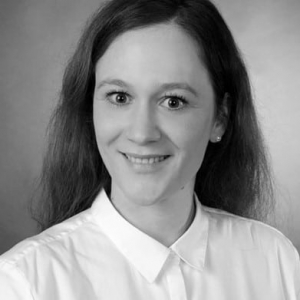
Lea Winkeler

Lea Winkeler
Lea Winkeler studierte Kultur-und Kunstwissenschaft an der Universität Bremen und nahm anschließend ein Fernstudium des Kultur-und Medienmanagements am KMM Hamburg auf.
Daneben arbeitete sie für verschiedene Kulturinstitutionen wie dem steptext dance project.e.V., TANZ Bremen und dem Musikfest Bremen vor allem im Bereich Administration/ Künstlerisches Betriebsbüro.
Foto: N.N.
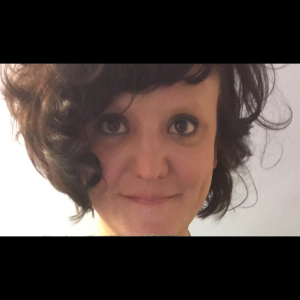
Jana Robert
Jana hat einen erstklassigen Abschluss mit Auszeichnung in Kunstmanagement und ist eine in Glasgow ansässige Produzentin von Multikunstformen mit umfassender Erfahrung in der internationalen Zusammenarbeit.
Da sie über viele Jahre in den Bereichen Theater, Tanz, Tonkunst, Musik, Film und bildende Kunst gearbeitet hat, hat sie eine Leidenschaft für die Realisierung ungewöhnlicher und oft ortsspezifischer Projekte.
Abgesehen von den eher konventionellen Aufführungsorten hat sie Performances und Installationen in Tunneln, auf Friedhöfen, auf Kränen, auf Booten und in Bahnhöfen produziert.
Zu ihren Kunden zählen eine Vielzahl renommierter Organisationen wie das Scottish Ensemble, Cryptic, Untitled Projects, Company of Wolves, der British Council und Creative Scotland.
Sie freut sich sehr darauf, Elisabeths wunderschönes Werk zu produzieren.
Foto: N.N.
Jana Robert
Piera Jovic
Piera studied dance at the Conservatory of Luxembourg and in Spain as a student of the CobosMika Company. Since 2014 Piera has been dancing in pieces by companies from Luxembourg or France, often co-produced by the Choreographic Centre of Luxembourg (Trois C-L), but also in productions by independent associations. She is an active member of the multidisciplinary collective MASKéNADA and works closely with the ROTONDES for educational projects.
In 2020, she will support the Belgian director Gregory Caers for an international youth theatre project to assist.
Piera recently joined the Via Verde company for her new creation.
Natalia Gabrielczyk
Natalia Gabrielczyk is part of the Hofesh Shechter Company since 2018. She studied Dance at Anton Bruckner University in Linz, where she also collaborated with Landestheater Linz. At the Hofesh Shechter Company she has been part of SHOW , East Wall, Shechter Underground and Grand Finale . She also teaches Hofesh Shechter Masterclasses.
Valentin Goniot
Valentin started dancing with hip-hop until the age of 15 and then started training in ballet and contemporary.
In 2017 at the age of 17 he joined the Ballet Junior de Genève where he worked and peformered repertoire from renouned choreographers such as Hofesh Shechter, Barak Marshall, Sharon Eyal, Maguy Marin, Emmanuel Gat, Ambra Senatore, Roy Assaf, Alexander Eckman and Pina Bausch.
He also had the oportunity to be part of creations with Theo Clinkard and Olivier Dubois.
On the side of his intense training, he enriched his vocabulary by participating several workshops including a lot of Gaga classes and Ohad Naharin repertoire.
Die Schriftführerin
Hildegard Elisabeth Schilling wurde 1957 in Mainz geboren. Sie studierte Rechtswissenschaft an der Johannes Gutenberg Universität Mainz. Seit 1987 ist sie als Rechtsanwältin zugelassen und ist mit ihrer Kanzlei in Wittlich tätig. Hildegard Schilling unterstützt die Making Dances a.s.b.l. in Bezug auf rechtliche Fragen.
Die Präsidentin
Sarah Rock ist freischaffende Theaterdramaturgin und Kulturjournalistin. Zur Zeit arbeitet sie hauptsächlich mit Anne Simon und Daliah Kentges. Seit 2018 ist Sarah Rock Dramaturgin beim Fundamental Monodrama Festival und gestaltet mit Steve Karier und Daliah Kentges das Festival-Programm.
Frau Rock lernte die Choreographin Elisabeth Schilling 2017 bei der Arbeit zu SIXFOLD im Musée d’Art Moderne Grand-Duc Jean (MUDAM) kennen. Seitdem unterstützt sie deren Arbeit regelmäßig beratend.
Natalia Gabrielczy
Natalia Gabrielczyk ist seit 2018 Teil der Hofesh Shechter Company. Sie studierte Tanz an der Anton-Bruckner-Universität in Linz, wo sie auch mit dem Landestheater Linz zusammenarbeitete. Bei der Hofesh Shechter Company war sie Teil von SHOW , East Wall, Shechter Underground und Grand Finale. Außerdem unterrichtet sie Hofesh Shechter Meisterklassen.
Valentin Goniot
Valentin tanzte bis zum Alter von 15 Jahren Hip-Hop und begann dann mit der Ausbildung in Ballett und zeitgenössischem Tanz.
Im Alter von 17 Jahren trat er 2017 dem Ballet Junior de Genève bei, wo er mit namhaften Choreographen wie Hofesh Shechter, Barak Marshall, Sharon Eyal, Maguy Marin, Emmanuel Gat, Ambra Senatore, Roy Assaf, Alexander Eckman und Pina Bausch arbeitete und deren Repertoire interpretierte.
Außerdem wirkte er an Kreationen mit Theo Clinkard und Olivier Dubois mit.
Neben seinem intensiven Training bereicherte er seinen Wortschatz durch die Teilnahme an mehreren Workshops, darunter viele Gaga-Kurse und Ohad Naharin-Repertoire.
Die luxemburgische Pianistin Cathy Krier wurde in der Saison 2015/16 als „ECHO Rising-Star“ an zahlreichen internationalen renommierten Konzerthäusern gefeiert, wo sie mit ihren Programmen aus Klassik und Moderne mit Werken von Rameau, Schubert Ravel und Berg sowie einer Auftragskomposition von Wolfgang Rihm für großes Aufsehen sorgte.
Cathy Krier, 1985 in Luxemburg geboren, begann mit fünf Jahren ihr Klavierstudium am Luxemburger Konservatorium. Ab 1999 gehörte sie der Meisterklasse von Pavel Gililov an der Hochschule für Musik und Tanz Köln an. Im Jahr 2000 spielte sie Ludwig van Beethovens Klavierkonzert N° 4 mit dem Latvian Philharmonic Chamber Orchestra unter der Leitung von Carlo Jans ein. 2003 verliehen ihr die Jeunesses Musicales du Luxembourg den Prix Norbert Stelmes. Ein Jahr später erhielt sie den Preis der Stiftung IKB International.
Zur Eröffnung der Philharmonie Luxembourg 2005 spielte Cathy Krier gemeinsam mit dem Pianisten Cyprien Katsaris vierhändig. Ein Jahr später trat sie beim Klavier-Festival Ruhr auf, wo sie eine Einladung zum Meisterkurs von Robert Levin annahm. Weitere Meisterkurse bei Dominique Merlet, Homero Francesch und Andrea Lucchesini, bei dem sie ihre Studien an der Scuola di Musica di Fiesole fortsetzte, sowie eine Einladung an die Académie musicale de Villecroze ergänzten ihre musikalische Ausbildung. 2007 war sie an der Eröffnung von «Luxemburg und Großregion – Kulturhauptstadt Europas» beteiligt.
Cathy Krier gab erfolgreiche Konzerte im Bozar in Brüssel, im Barbican Centre in London, in der Philharmonie 2 in Paris, im Sage Gateshead, in der Philharmonie Luxembourg, der Laeiszhalle in Hamburg, am Konzerthaus Dortmund, im Palau de la musica in Barcelona, in der Calouste Gulbenkian Fondation in Lisbon, im Palace of Arts (Mupa) in Budapest, Konserthus Stockholm, Concertgebouw Amsterdam, Cologne Philharmonie, Casa da musica in Porto, Musikverein Wien, Town Hall in Birmingham, Festspielhaus Baden-Baden sowie bei den Festspielen Mecklenburg Vorpommern.
Im September 2017 veröffentlichte sie ihre neue CD „Masques“ unter dem Label Cavi-Music / France Musique Partner mit Musik von Szymanowski und Debussy, die hervorragende Kritiken von der Presse erhielt.
Andreas Papapetrou ist Komponist, Performer, Forscher und Musiklehrer. Sein kompositorisches Schaffen umfasst Werke für verschiedene Ensembles in unterschiedlichen Genres, vom Solo bis hin zu vollsinfonischen Orchesterwerken, sowie Werke der elektroakustischen und elektronischen Musik und Werke für Theater, Film und Tanz. Als klassisch ausgebildeter Pianist und Akkordeonist konzentriert er sich auf Werke der zeitgenössischen Musik, kunstübergreifende Performance und Improvisation.
Seine Kompositionen wurden u.a. vom Trinity Laban Symphony Orchestra, dem Fidelio Trio, dem DissonArt Ensemble, dem Athens Contemporary Music Ensemble, den CoMA Voices London, dem Marson Harp Trio, dem Solstice und Wu Streichquartett an verschiedenen Orten in Großbritannien, Europa und dem Nahen Osten aufgeführt, so unter anderem in dem Institut für Zeitgenössische Kunst London, des Nationalen Schifffahrtsmuseums London, der Barbican-Ausstellungshallen London, der Colourscape, des Athener Megaron, der Jerusalemer Akademie für Musik und Tanz, der zypriotischen Theaterorganisation THOC und der Kulturstiftung der Bank von Zypern. Bis heute führte er sechs große interdisziplinäre Aufführungen seiner eigenen Kompositionen auf und kuratiert, wie z.B. Reclaiming the Roof (Bank of Cyprus Cultural Foundation, 2018), Sound and Seek (Colourscape Commission 2017, Clapham Common), Desmōtēs (BoCCF, 2017), The Sounding Museum (BoCCF, 2017), Exercise: Les Noces (Trinity Laban Parallax 09: Peckham Asylum, 2016), Aus der Luft gegriffen (Nullwelle: Altes Finsbury Rathaus, 2016).
1984 in Nikosia, Zypern, geboren, begann er schon früh mit dem Musikstudium und erhielt währenddessen mehrere Stipendien und Auszeichnungen. Er schloss sein Studium an der griechischen Musikhochschule 2001 mit einem Klavierlehrerdiplom (Ptychion) mit Auszeichnung ab. Er setzte seine Studien in Griechenland fort und schloss 2008 sein Studium am Staatlichen Konservatorium von Thessaloniki mit einem Diplom für Klavierspiel mit Auszeichnung ab. 2009 erwarb er an der Aristoteles Universität von Thessaloniki sein Ptychion (BA & MA Degree) in Komposition mit Auszeichnung. Danach zog er nach London, wo er am Trinity College of Music Komposition studierte und 2011 seinen MMus in Komposition mit Auszeichnung erwarb. Im Jahr 2016 schloss er seinen PhD in Creative Practice – Composition (ohne Änderungen bestanden) am Trinity Laban Conservatoire of Music and Dance ab, betreut von Dominic Murcott und Sophie Fuller ab.
Er studierte Musikkomposition bei Michalis Lapidakis, Panayiotis Kokoras, Errollyn Wallen, Stephen Montague und Dominic Murcott. Er studierte Klavier bei Elena Sophocleous u.a., Akkordeon bei Irinoula Constantinidou und Gesang bei Yula Michail.
Zu seinen Auszeichnungen und Stipendien gehören: Eye Music Trust Musikkommission (2017), Stipendium der Onassis Foundation. Derzeit ist er wissenschaftlicher Mitarbeiter der Europäischen Universität von Zypern und arbeitet auch als Musiklehrer an der American International School of Cyprus.
Michèle Tonteling wurde in Luxemburg geboren und studierte Kostüm- und Bühnenbilddesign an der Artesis Hogeschool Antwerpen. 2014 schloss sie ihren Master-Abschluss in Kostümdesign an der UDK (Universität der Künste) in Berlin ab. Von 2000-2015 arbeitete und lernte sie in Zusammenarbeit mit den Künstlern Hendrick Van den Kerchove und Tiziana Raffaelli und erwarb sich fundierte Kenntnisse in verschiedenen Maltechniken.
Zurzeit lebt sie in Berlin und Luxemburg und arbeitet als Kostümbildnerin und Künstlerin in den Bereichen Film, Tanz und Theater. Michèles Vielseitigkeit in der Arbeit mit den unterschiedlichsten Materialien verbindet sich mit ihrer Liebe zum Detail und zur Beobachtung.
Melanie Planchard ist eine freiberufliche Kostümdesignerin, die seit 2011 in den Bereichen Film, Theater, Performance und Tanz arbeitet. Melanie weiß, dass ‚Visuals‘ unerlässlich sind, um dem Publikum die Botschaft einer Performance zu vermitteln. Sie arbeitet gerne eng mit Choreographen und Regisseuren zusammen, um Designs zu entwickeln, die relevant und bedeutungsvoll sind. Sie glaubt, dass Designs nicht autonom und dekorativ sein sollten und nur auf der Bühne mit den Darstellern Sinn machen.
Nach ihrem BA in “Modedesign” von der Haute Ecole Francisco Ferrer in Brüssel, erhielt sie ein Masterdiplom in “Costume Design for Performance” von der University of the Arts London. Während ihres Master-Programms erhielt sie ein Stipendium für künstlerische Studien von der Auguste Van Werveke-Hanno Stiftung.
Sie entwarf und fertigte Kostüme für Juliette Films (LU), Amour Fou (LU), Trois CL (LU), Philharmonie Luxemburg (LU), Grand Théâtre du Luxembourg (LU), Théâtre d’Esch (LU) und Tate Modern (Großbritannien), Théâtre National du Luxembourg (LU), Rotondes (LU) an.
Sie hat kürzlich den stART-up-Fonds der “Oeuvre Nationale de Secours Grand-Duchesse Charlotte” gewonnen und bereitet in Zusammenarbeit mit der Fotografin Martine Pinnel eine Kostüm-Fotoausstellung vor.
David arbeitet seit fünfzehn Jahren in der darstellenden Kunst, wobei seine letzte Vollzeitstelle als Bühnen- und Tourneemanager am Scottish Dance Theatre wahrgenommen wurde. Er setzt die Bewegung und das Heldentum des Tanzes mit seiner Leidenschaft, dem Snowboarding, gleich. David arbeitet derzeit an seiner Doktorarbeit über Menschenrechte.
Unternehmer und Verkaufs-, Kommunikations- und Verhandlungsspezialist mit der Leidenschaft und dem Vermögen, die Fähigkeiten von Geschäftsleuten zu entwickeln, damit sie ihre Ziele erreichen können. Weiß, wie man effektive, leistungsstarke Teams motiviert und entwickelt, die Ergebnisse erzielen.
Frances gründete ihr eigenes Unternehmen, SpokenWord Limited, im Jahr 2002 und bietet alle Aspekte der Überzeugungsarbeit in der Geschäftswelt an: Präsentation, Verhandlung, Verkauf, Einwirkung und Überzeugung, Management-Coaching, Führungs- und Persönlichkeitstraining. Ein großer Teil ihrer Arbeit umfasst die Zusammenarbeit mit Unternehmern in der kreativen Kunstindustrie bei der Entwicklung ihrer Marketing- und Pitching-Fähigkeiten für eine Reihe verschiedener Zielgruppen, von Investoren bis hin zu potenziellen Joint Ventures oder Käufern.
Frances Tippers zwanzigjährige Verkaufs- und Marketingerfahrung begann bei Reuters, dem globalen Finanzinformationsanbieter. Sie wechselte von Vertriebsabteilungen und Account Management in das internationale Marketing und war für die Verhandlung globaler Accounts sowie die Entwicklung und Einführung ihrer wichtigsten Finanzinformationen und FX-Transaktionsprodukte weltweit verantwortlich.
Frances wechselte ins General Management in den USA und schuf in enger Zusammenarbeit mit einer Reuters-Tochtergesellschaft im Silicon Valley eine neue Gruppe, die die Entwicklung und Vermarktung der ersten von Reuters angebotenen webbasierten Produkte beaufsichtigte.
Bücher:
21 Dirty Tricks in Negotiation (co-author with Mike Phipps)
21 Dirty Tricks in Sales (co-author with Mike Phipps)
Annick Kieffer
Annick Kieffer ist eine Design-Direktorin aus Luxemburg.
Sie studierte Design in Stuttgart und schloss ihr Studium an der FH Trier mit einem Diplom in Kommunikationsdesign ab. Annick hat verschiedene Praktika in München, Brüssel und Luxemburg absolviert. Bevor sie bei StudioPolenta arbeitete, war sie für lola tätig.
Moritz Gansen hat Philosophie, Soziologie und Anglistik an der Freien Universität Berlin, am Centre for Research in Modern European Philosophy, Kingston University, am Goldsmiths, University of London sowie an der Albert-Ludwigs-Universität Freiburg studiert. Derzeit promoviert er am Institut für Philosophie der Technischen Universität Darmstadt mit einer Arbeit zur Rezeption und Transformation des anglo-amerikanischen Pragmatismus in der französischen Philosophie des 20. Jahrhunderts. Er hielt Vorträge in Deutschland, Finnland, Irland, den Niederlanden, Schweden, der Schweiz, Spanien und dem Vereinigten Königreich und veröffentlichte seine Arbeiten in mehreren Sammelbänden. Moritz Gansen ist Mitbegründer der kollektiven Plattform diffrakt | zentrum für theoretische peripherie, wo er seit der Gründung zahlreiche Veranstaltungen organisiert hat, darunter auch, mit Hannah Wallenfels, die Reihe dis:positions | Französische Philosophie heute und mit Georg Dickmann und Hannah Wallenfels die Reihe SO FAR | Science-Fiction(s). Neben seinen theoretischen und philosophiehistorischen Beschäftigungen arbeitet er als freier Übersetzer und Lektor und als freier Dramaturg. Moritz Gansen lebt in Berlin.
Simone Stewart
Simone Stewart ist Marketing- und Kommunikationsmanagerin, Kuratorin und Kunstberaterin mit Erfahrung in mehreren nationalen Museen und Kunstinstitutionen in Großbritannien wie Victoria and Albert Museum, Royal Academy of Arts und der Wallace Collection sowie bei verschiedenen internationalen Projekten in Europa, USA und Asien. Sie diversifizierte ihre Praxis und arbeitete eng mit international renommierten Tanzkompanien zusammen, zuletzt mit dem Clod Ensemble für ein Projekt im britischen Pavillon auf der Biennale von Venedig 2018 / Tournee von Placebo 2018. Simone begann 2018 mit Elisabeth an der Arbeit FELT zu arbeiten und hat sie seitdem durch verschiedene Beratungsdienste im Bereich Marketing und visuelle Künste unterstützt.

FERAL ARTS – Jill Smith und Kathryn Boyle
Feral Arts produziert ein Portfolio von Performance- und Bewegungspraktikern wie Al Seed, Colette Sadler, Oceanallover, Nic Green, Liz Aggiss, Bex Anson und Dav Bernard (MHz), Mele Broomes und Sita Pieraccini. Feral unterstützt Künstler, die kunstformübergreifend arbeiten, und Verfechter, die durch ihre Praxis neue Performance-Sprachen erforschen.
Während ihrer Karrieren in den letzten 14 Jahre waren sie in Kuratoren- und Managementpositionen bei einer Reihe von Schottlands führenden Kunstfestivals tätig, darunter National Review of Live Art, Arches Live, Behaviour Festival, Early Days Festival, Glasgay, Into The New, Sound Thought Festival, Solas Festival, Dance House Glasgow’s Winterfest und Mischief La Bas’. Fest des Todes.
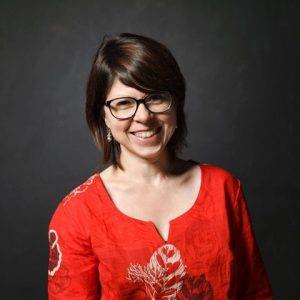
Veronika Meindl
Veronika Meindl studierte Kulturwissenschaften in Regensburg und Clermont-Ferrand. Nach ihrem Universitätsabschluss im Jahr 2008 arbeitete sie für verschiedene Kulturinstitutionen in Luxemburg, wie z.B. TROIS C-L Luxembourg in den Bereichen Produktion und Management.
Seit 2019 arbeitet sie auch freiberuflich mit Tänzern und Choreographen zusammen, um sie bei administrativen und produktionsbezogenen Aufgaben zu unterstützen.
In the 2015/16 season, the Luxembourg pianist Cathy Krier (www.cathykrier.com)was celebrated as the “ECHO Rising Star” at numerous internationally renowned concert halls, where she caused a great stir with her programmes of classical and modern music, including works by Rameau, Schubert Ravel and Berg, as well as a commissioned composition by Wolfgang Rihm. Cathy Krier, born in Luxembourg in 1985, began her piano studies at the Luxembourg Conservatory at the age of five. In 1999 she joined the master class of Pavel Gililov at the Hochschule für Musik und Tanz Köln. In 2000, she recorded Ludwig van Beethoven’s Piano Concerto N° 4 with the Latvian Philharmonic Chamber Orchestra conducted by Carlo Jans. In 2003 the Jeunesses Musicales du Luxembourg awarded her the Prix Norbert Stelmes. One year later she received the prize of the IKB International Foundation.
At the opening of the Philharmonie Luxembourg in 2005, Cathy Krier played four hands together with the pianist Cyprien Katsaris. A year later she performed at the Ruhr Piano Festival, where she accepted an invitation to attend Robert Levin’s master class. Further master classes with Dominique Merlet, Homero Francesch and Andrea Lucchesini, where she completed her studies at the Scuola di Musica di Fiesole continued, and an invitation to the Académie musicale de Villecroze completed her musical education. In 2007 she was involved in the opening of “Luxembourg and Greater Region – Cultural Capital of Europe”. Cathy Krier gave successful concerts at the Bozar in Brussels, the Barbican Centre in London, the Philharmonie 2 in Paris, the Sage Gateshead, the Philharmonie Luxembourg, the Laeiszhalle in Hamburg, the Konzerthaus Dortmund, the Palau de la musica in Barcelona, at the Calouste Gulbenkian Fondation in Lisbon, the Palace of Arts (Mupa) in Budapest, Konserthus Stockholm, Concertgebouw Amsterdam, Cologne Philharmonie, Casa da musica in Porto, Musikverein Vienna, Town Hall in Birmingham, Festspielhaus Baden-Baden as well as at the Festspiele Mecklenburg Vorpommern.
In September 2017 she released her new CD “Masques” under the label Cavi Music / France Musique Partner with music by Szymanowski and Debussy, which received excellent reviews from the press.
Andreas Papapetrou is a composer, performer, researcher and music teacher. His compositional output includes works for various ensembles in various genres, from solo to full symphonic orchestral works, as well as works of electroacoustic and electronic music and works for theatre, film and dance. As a classically trained pianist and accordionist, he concentrates on works of contemporary music, cross-art performance and improvisation.
His compositions have been performed by the Trinity Laban Symphony Orchestra, Fidelio Trio, DissonArt Ensemble, Athens Contemporary Music Ensemble, CoMA Voices London, Marson Harp Trio, Solstice and Wu String Quartet at various venues in the UK, Europe and the Middle East, such as the Institute of Contemporary Art London, the National Maritime Museum London, the Barbican Exhibition Halls London, Colourscape, Athens Megaron, the Jerusalem Academy of Music and Dance, the Cypriot theatre organisation THOC and the Cultural Foundation of the Bank of Cyprus. To date he has performed and curated six major interdisciplinary performances of his own compositions, including Reclaiming the Roof (Bank of Cyprus Cultural Foundation, 2018), Sound and Seek (Colourscape Commission 2017, Clapham Common), Desmōtēs (BoCCF, 2017), The Sounding Museum (BoCCF, 2017), Exercise: Les Noces (Trinity Laban Parallax 09: Peckham Asylum, 2016), Out of the air (zero wave: Old Finsbury Town Hall, 2016).
Born in 1984 in Nicosia, Cyprus, he began studying music at an early age and has received several scholarships and awards. He graduated from the Greek Academy of Music in 2001 with a diploma as piano teacher (Ptychion) with distinction. He continued his studies in Greece and graduated from the Thessaloniki State Conservatory of Music in 2008 with a diploma in piano playing with distinction. In 2009 he obtained his Ptychion (BA & MA Degree) in Composition with distinction at the Aristotle University of Thessaloniki. He then moved to London, where he studied composition at Trinity College of Music and obtained his MMus in Composition with distinction in 2011. In 2016 he completed his PhD in Creative Practice – Composition (passed with no changes) at the Trinity Laban Conservatoire of Music and Dance, supervised by Dominic Murcott and Sophie Fuller.
He studied music composition with Michalis Lapidakis, Panayiotis Kokoras, Errollyn Wallen, Stephen Montague and Dominic Murcott. He studied piano with Elena Sophocleous and others, accordion with Irinoula Constantinidou and singing with Yula Michail. His awards and scholarships include Eye Music Trust Music Commission (2017), Scholarship of the Onassis Foundation. He is currently a research assistant at the European University of Cyprus and also works as a music teacher at the American International School of Cyprus.
Entrepreneur and sales, communication and negotiation specialist with a passion and ability for developing the skills of business professionals so they can achieve their goals. Knows how to motivate and develop effective, high performing teams that get results.
Frances founded her own company, SpokenWord Limited, in 2002 and delivers all aspects of business persuasion training from Presentation, Negotiation, Selling, Influence and Persuasion, Management Coaching, Leadership and Personal Impact training. A large part of her work involves working with entrepreneurs in the creative art industries on developing their marketing and pitching skills to a range of different audiences from investors to potential joint ventures or buyers.
Frances Tipper’s twenty years of sales and marketing experience began at Reuters, the global financial information provider. She moved from sales divisions and account management into international marketing and was responsible for negotiating global accounts and the development and launches of their flagship financial information and FX transaction products worldwide.
Frances moved to general management in the US and, working closely with a Reuters subsidiary in Silicon Valley, created a new group overseeing the development and marketing of the first web-based products offered by Reuters.
Books
21 Dirty Tricks in Negotiation (co-author with Mike Phipps)
21 Dirty Tricks in Sales (co-author with Mike Phipps)
Melanie Planchard is a freelance costume designer who has been working in the fields of film, theatre, performance and dance since 2011. Melanie knows that ‘visuals’ are essential to get the message of a performance across to the audience. She enjoys working closely with choreographers and directors to create designs that are relevant and meaningful. She believes that designs should not be autonomous and decorative and only make sense on stage with the performers.
After her BA in “Fashion Design” from the Haute Ecole Francisco Ferrer in Brussels, she received a Masters degree in “Costume Design for Performance” from the University of the Arts London. During her master program she received a scholarship for artistic studies from the Auguste Van Werveke-Hanno Foundation.
She designed and made costumes for Juliette Films (LU), Amour Fou (LU), Trois CL (LU), Philharmonie Luxembourg (LU), Grand Théâtre du Luxembourg (LU), Théâtre d’Esch (LU) and Tate Modern (UK), Théâtre National du Luxembourg (LU), Rotondes (LU).
She has recently won the stART-up fund of the “Oeuvre Nationale de Secours Grand-Duchesse Charlotte” and is preparing in collaboration with the photographer Martine Pinnel a costume photo exhibition.
Sarah Rock is a freelance theatre dramaturg and cultural journalist. Currently she works mainly with Anne Simon and Daliah Kentges. Since 2018, Sarah Rock has been a dramaturg at the Fundamental Monodrama Festival and is responsible for the festival programme with Steve Karier and Daliah Kentges.
David has worked in the performance arts for fifteen years, with his last full-time position being stage and tour manager at Scottish Dance Theatre. He equates the movement and heroism of dance to that of his passion, snowboarding. David is currently working on his his PhD in Human Rights.
Annick Kieffer
Annick Kieffer is a design director from Luxembourg. She studied design in Stuttgart and finished her studies at the FH Trier with a diploma in communication design. Annick completed various internships in Munich, Brussels and Luxembourg. Before she worked at StudioPolenta, she worked for lola.
Moritz Gansen studied philosophy, sociology and English language and literature at the Free University of Berlin, the Centre for Research in Modern European Philosophy, Kingston University, Goldsmiths, University of London and the Albert-Ludwigs-University of Freiburg. He is currently doing his doctorate at the Institute of Philosophy at the Technical University of Darmstadt with a thesis on the reception and transformation of Anglo-American pragmatism in 20th century French philosophy. He has lectured in Germany, Finland, Ireland, the Netherlands, Sweden, Switzerland, Spain and the United Kingdom and published his work in several anthologies. Moritz Gansen is co-founder of the collective platform diffrakt | zentrum für theoretische peripherie, where he has organised numerous events since its foundation, including, with Hannah Wallenfels, the series dis:positions | French philosophy today and with Georg Dickmann and Hannah Wallenfels the series SO FAR | Science-Fiction(s). In addition to his theoretical and philosophical-historical activities, he works as a freelance translator and editor and as a freelance dramaturg. Moritz Gansen lives in Berlin.
Simone Stewart
Simone Stewart is a marketing and communications manager, curator and art consultant with experience in several national museums and art institutions in the UK such as the Victoria and Albert Museum, Royal Academy of Arts and the Wallace Collection, as well as in various international projects in Europe, USA and Asia. She diversified her practice and worked closely with internationally renowned dance companies, most recently with the Clod Ensemble for a project in the British Pavilion at the Venice Biennale 2018 / Placebo tour 2018. Simone began working with Elisabeth on the work FELT in 2018 and has since supported her through various consulting services in the field of marketing and visual arts.

FERAL ARTS – Jill Smith und Kathryn Boyle
Feral Arts produces a portfolio of performance and movement practitioners including Al Seed, Colette Sadler, Oceanallover, Nic Green, Liz Aggiss, Bex Anson and Dav Bernard (MHz), Mele Broomes and Sita Pieraccini. Feral supports artists who work across art forms and advocates who explore new performance languages through their practice.
During their careers over the last 14 years they have held curatorial and management positions at a number of Scotland’s leading arts festivals, including National Review of Live Art, Arches Live, Behaviour Festival, Early Days Festival, Glasgay, Into The New, Sound Thought Festival, Solas Festival, Dance House Glasgow’s Winterfest and Mischief La Bas’. Festival of Death.

Veronika Meindl
Veronika Meindl studied cultural sciences in Regensburg and Clermont-Ferrand. After graduating in 2008, she worked for various cultural institutions in Luxembourg, such as TROIS C-L Luxembourg in the fields of production and management.
Since 2019 she has also been working freelance with dancers and choreographers to support them in administrative and production-related tasks.

Elisabeth at TEDx Women Luxembourg City
Elisabeth has been invited to give a Talk at TEDx Women in Luxembourg City.
The event will take place at the Hemicycle European Convention Centre in Luxembourg from 1-6pm.
Details will be published closer to the date.
Photo: Bohumil Kostohryz
‘Anthem Moves’ – New Work for Cooper Gallery Dundee
For the 12h Non-State Parade / International Symposium of Cooper Gallery Dundee on 30th November 2019 Elisabeth was invited to create a response to the ongoing exhibition by artist Jasmina Cibic. Together with her team, Elisabeth created the concept named ‘Anthem Moves’.
The movement score will be developed from research on the implicit and explicit rules of behaviour – as well as their breaching – while anthems are being played. How do people behave and move? Which modes of affirmation and critique do they develop for these occasions? While the standard image of the body during the national anthem is certainly that of a static and reverential servant, the actual body is traversed by micro- and macro-movements, shown in facial expressions, body language and gestures, both conscious and unconscious. From these movements, captured uncountable times, the score will develop a language to express a wide range of political affects in a minimalistic and often static, statuesque style.
The musical score will be composed by Andréas Papapetrou, who, after research into official and inofficial anthems and their political and musical histories, will draw on existing anthems to create a new score, taking keys, harmonies, rhythmical structure and general pompous and officious qualities as a starting point.
The work will be dramaturgically supported by Moritz Ganzen.
Photo: Cooper Gallery
The Nutcracker – with Hannah Ma Dance
In December, Elisabeth will dance ‘The Nutcracker’ with Company Hannah Ma Dance.
Performance dates are:
December 11th and 12th: Landesmuseum Stuttgart (https://www.landesmuseum-stuttgart.de)
December 18th and 19th: Tuchfabrik Trier (https://www.tufa-trier.de)
Press on ‘Sketches on Ligeti’
Presse on ‘Sketches on Ligeti’ at Wonder Women Festival Lucca, October 2019.
Original article in Italian:
http://www.losguardodiarlecchino.it/2019/11/alla-ricerca-di-complessita/?fbclid=IwAR1IrQZwIoW6Nx6tnKNQwDlUcJUYhcks97TdDDnSUDo7Pp4F8j3vkW5wOe4
Lunch Time Talk at Glasgow University
On 12th November 2019 between 1-2pm, Elisabeth will give a Lunch Time talk at the University of Glasgow invited by the Theatre Studies Department. She will talk about her past work and also open the conversation to questions from the audience.
Wonder Women Festival Italy
Together with pianist Cathy Krier, Elisabeth has been invited to the Wonder Women Festival in Tuscany, Italy to perform the work ‘Sketches on Ligeti’
The performance will take place on 28th October 2019 at 9pm at Teatro San Girolamo di Lucca.
More information on: https://www.facebook.com/events/514991239092412/
Interview with Elisabeth in ‘La Glaneuse’
Marie-Laure Rolland, founder and journalist of Luxembourgish Magazine ‘La Glaneuse’ interviewed Elisabeth about the choreographic process creating Peer Gynt.
Video and photos by Bohumil Kostohryz.
Full article available here.
Anxiety by Anne Simon
Peer Gynt in Berlin
Elisabeth is currently in Berlin working on the choreography for Peer Gynt together with the actors.
Beginn of a new work with choreographer Linda Forsman, Stockholm
In September, Elisabeth will start working with Swedish choreographer Linda Forsberg towards a new production to premiere as a full evening length work 2020.
Image: Eunsun Cho